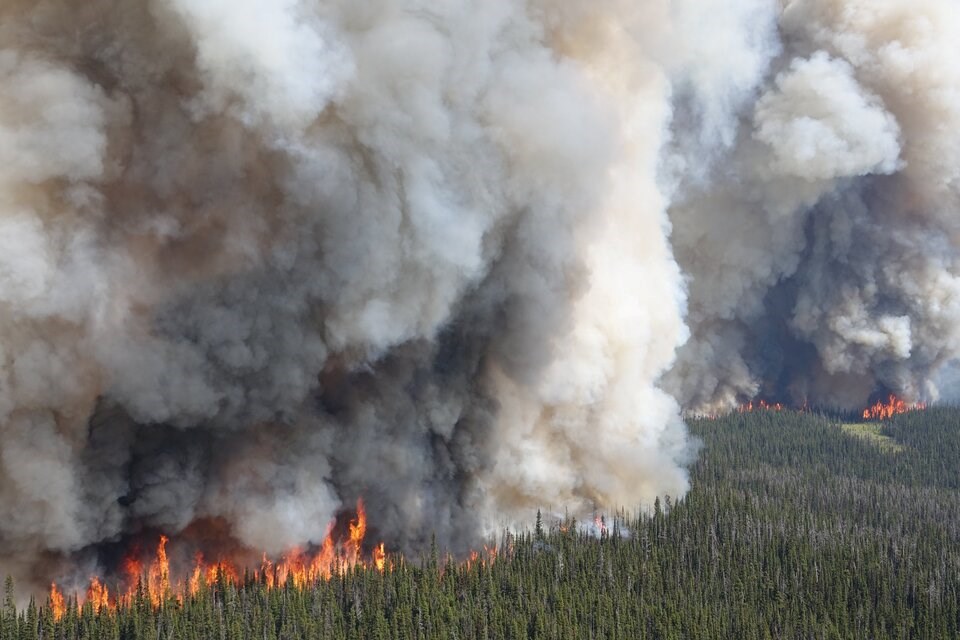Every drop of water counts amid unprecedented drought.
It’s time to pay attention to climate change. B.C. is in the midst of its worst-ever fire season, we’re in an extreme drought and our waterways are at all-time lows. There’s no rain in the forecast, the grass is all dried out and our trees are suffering.
The level and extent of drought in B.C., this early in the summer, is “very concerning,” says Bowinn Ma, B.C.’s minister of Emergency Management and Climate Readiness.
Ma urged everyone to take shorter showers, make sure every laundry or dishwasher loads are full and turn off the tap when brushing your teeth or shaving. Outdoors, water lawns only sparingly, and water plants and gardens in the morning or the evening to avoid evaporation, and, if we’re lucky enough to get any, save rainwater in a barrel for future watering.
“Water is a precious resource… every drop counts,” Ma told a provincial news conference.
In B.C., we don’t usually have to worry about water consumption, given we live in a temperate rainforest. But that has changed over the past several years, with dry, dry summers and wet, wet winters now the norm. I can’t remember the last day it rained in Richmond and I’ve noticed trees turning fall colours, yet it’s only July. This is not normal.
The snow melt was the earliest ever in the province and temperatures in May were nine to 10 degrees above normal average, which means stream flows are extremely low this year, said Jonathan Boyd, a hydrologist at B.C.’s River Forecast Centre. This year is unusual because water levels are so low so early in the season and the drought conditions are so widespread, he said. Making matters worse is that higher-than-normal temperatures are forecast, he said.
Four of B.C.’s 34 water basins are at level five, the worst level, which means it is almost certain that an area will see adverse effects on communities and ecosystems. There are 18 other water basins at level four, which means those adverse effects are likely, the province said.
Of course, drought and wildfires are linked.
“We are seeing that correlation on the ground now,” said Cliff Chapman, director of wildfire operations at BC Wildfire Service.
As of July 18, 1,100 wildfires had burned more than 1.39 million hectares of land in B.C., making this the worst fire season ever, and it’s only July. B.C. has requested 1,000 additional firefighters, as the province battles more than 300 wildfires, more than half of which are out of control.
The hot and dry conditions make fires more intense.
The 10-year average for B.C., taken from 2012 to 2022, is 1,483 wildfires from April 1 to March 31 the following year. On average, 42 per cent of these are human-caused and 58 per cent are lightning-caused. The worst year of the past 15 years, other than this year was 2018, when there were 2,117 fires and 1.35 million hectares burned.
Canada’s Minister of Emergency Preparedness Bill Blair tweeted that the Canadian military and other federal resources would be mobilized to help fight the fires in B.C. In the meantime, two young firefighters died while fighting the fires, one a 19-year-old woman in B.C., the other in the Northwest Territories.
B.C. Premier David Eby said his heart was with the firefighters.
“Day in and day out during wildfire season, our firefighting crews go to heroic lengths to keep people and communities in B.C. safe. This tragedy serves as a heartbreaking reminder that they are often putting their lives on the line to do so,” Eby said in a statement.
And then the news that a nine-year-old boy died in 100 Mile House when an existing medical condition was aggravated by wildfire smoke. More than 600 people in B.C. died during the 2021 heat dome; as climate change progresses, more deaths will come.




